What do you collect (2)
In the newsletter of March 2022 (issue 139) I read about our chairman's struggles regarding the addition of 3-wheelers, quads, snowmobiles and electric motorcycles to our area of collecting. I can justify keeping the snowmobiles out of his collection. I keep them separate myself. Likewise all electrically powered (motor) vehicles. These are extensions of our collection through inventions and applications of the last decades.

His final frame is now: Motorcycle = "a motor vehicle on two or three wheels, with or without a sidecar or trailer, powered by an internal combustion engine or an electric motor".
In my (exhibition) collection, the first chapter is the development of the bicycle and engine, leading to the invention of the motorcycle: the Einspur, by Daimler. As known this was a test machine, a frame with two wheels, with a reduced size Otto engine as drive.
However, the vehicle that was actually the first to be given the name motorcycle, or in German "motorrad", was Hildebrand & Wolfmüller's first production motorcycle in 1895.
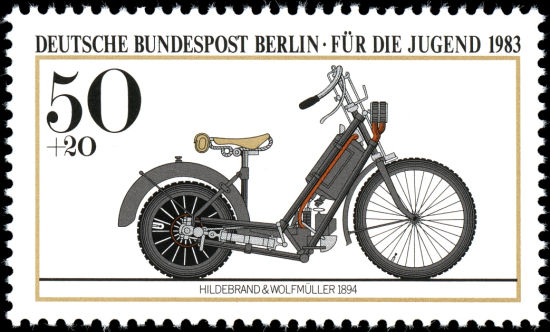
Both the Einspur and the Hildebrand & Wolfmüller had an internal combustion engine as drive.
Part of the frame used by Hans Baartman is "driven by a combustion engine". Is this by definition an internal combustion engine? Or could this also be a different kind of combustion engine? For example, an external combustion engine?
An external combustion engine is an engine in which a working fluid is heated by combustion in an external source. The fluid then produces motion and usable work, by expanding and acting on the mechanism of the engine. The liquid is then discharged (open loop) or cooled, compressed and reused (closed loop).
In simple words: by heating (for example) water, it vaporizes into a large volume of steam, and the steam pushes away a piston, which drives a shaft that turns a wheel. The steam is cooled and condenses to water, and the cycle repeats.
In these types of engines, the combustion is mainly used as a heat source and the engine can work equally well with other types of heat sources such as nuclear, solar, geothermal or exothermic reactions without combustion. They are then not strictly classified as external combustion engines, but as external thermal engines.
The steam engine was invented in 1712 by Thomas Newcomen, a mining engineer, who saw it as the solution for pumping water to prevent the flooding of mine galleries.
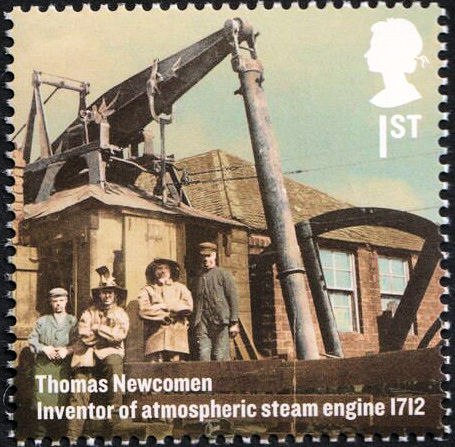
James Watt has made a very large adaptation by bringing the cooling of the liquid (steam) outside the cylinder, which immediately improved the efficiency enormously. After all, it was no longer necessary to wait for the steam to cool down before the next working cycle could begin. Because of this, Watt is considered the inventor of the steam engine.
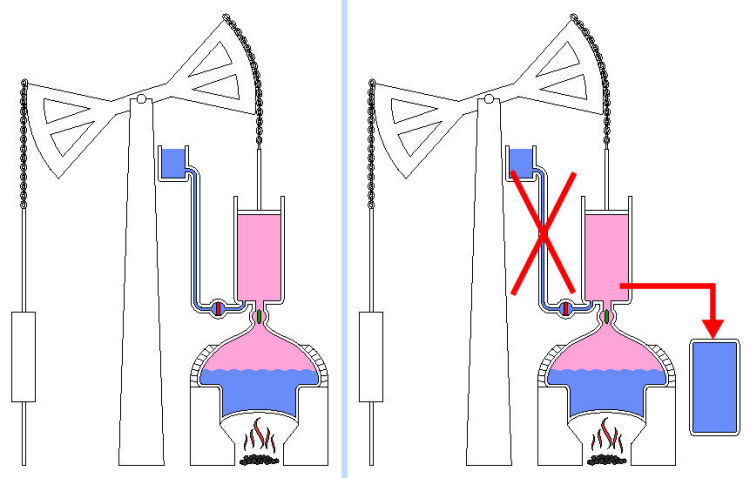
On the left the steam engine of Newcomen and on the right Watt's, where the steam is collected
and cooled in the vessel next to the boiler
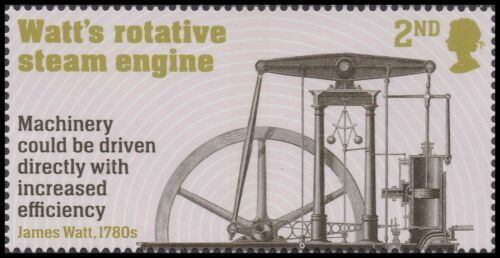
After the first successful application in the form of pumping mine water, other applications were quickly sought.
Nicolas-Joseph Cugnot developed the first self-propelled vehicle based on the steam engine. The following year he built an improved version, where the heavy vehicle had two wheels behind and one in front. It was also this vehicle that caused the first traffic accident in Paris in 1771. After this accident Cugnot stopped, but his design was picked up by the Englishman Richard Trevithick and further developed, which eventually led to the (steam) train.
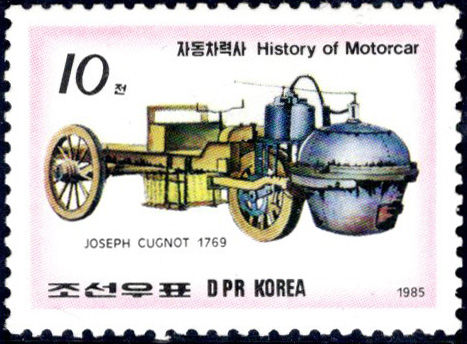
The first steam train ran in England in 1830. The Netherlands followed in 1839 with the first steam train on the route Amsterdam - Haarlem. Earlier, in 1807, Robert Fulham's steam-powered paddle steam boat had started the first commercial transport service in America.
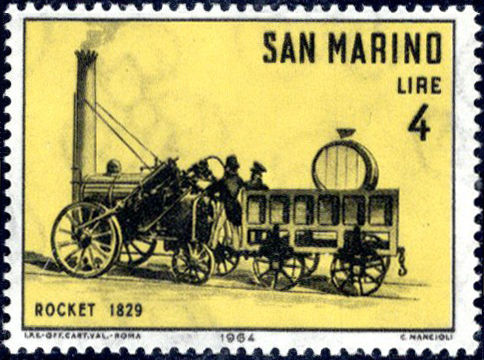
But then it gets interesting for us, with the steam motorcycles. Steam motorcycle: "A steam motorcycle is a two-wheeled vehicle propelled by a steam engine".
Believe it or not, it exists, a steam powered motorcycle.
Around 1860, the company of Frenchman Pierre Michaux developed a pedal bicycle. The bike still looked like the high-wheel bicycle (also known as "Penny-farthing"), but the front wheel had already been significantly reduced in size. In 1867 his son mounted a small steam engine on it and the first steam motorcycle known today was born.

The steam engine was the one-cylinder engine, patented by the French engineer Louis-Guillaume Perreaux, with an alcohol burner and double belt drive. The vehicle is therefore commonly known as the Michaux-Perreaux.

Around the same time Sylvester Roper made a twin cylinder steam bicycle in America.
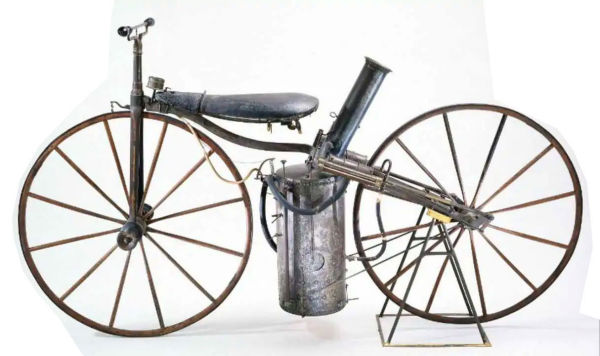
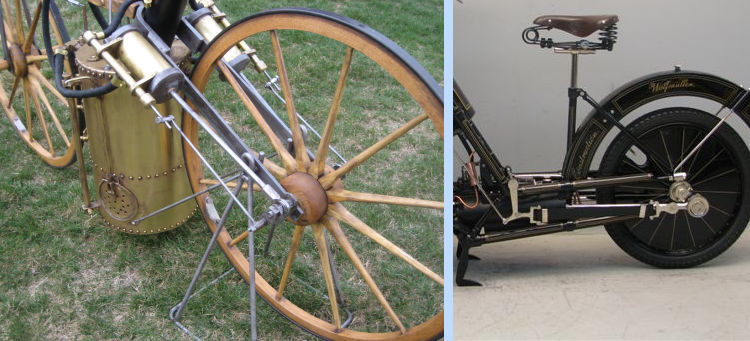
Compare the drive system of the Roper (left) and the later Hildebrand & Wolfmüller (right)
Due to the lack of good (fast) communication means at the time, it is unlikely that Michaux and Roper were aware of each other's invention.
In 1881 the American Lucius Copeland developed the Star high-wheeler, the rear wheel of which was driven by a smaller steam boiler. It reached a top speed of 20 kilometers per hour.
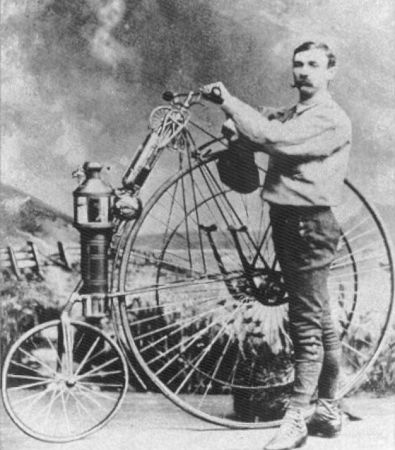
Although the steam motorcycle had a certain popularity, the general public was not happy with the noise and foul air produced by the vehicle.
To return to the question in the title, what do you collect: do the steam bikes, as well as the later developments such as 3-wheelers, quads, snowmobiles and electric motorcycles belong to our collection area?
If the above question is answered positively, the following dilemma immediately arises: what was the first motorcycle?
Nico Helling
Background information about the development of the steam engine:
https://www.dbnl.org/tekst/lint011gesc04_01/lint011gesc04_01_0005.php
https://driving-dutchman.nl/de-beknopte-geschiedenis-van-de-motorfiets
Top - Back to former page - Home |











